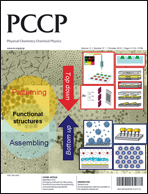In this work, surface modification at an atomic level, coupled with CO as molecular probe, was applied to study the step-site reactivity of platinum single crystals. Stepped platinum single crystal electrodes with (111) terraces and step sites of different symmetry were modified by irreversible adsorption of Bi and Te adatoms selectively deposited on steps, and characterized in 0.1 M HClO4 solution. CO charge-displacement and oxidative stripping were employed to investigate the reactivity changes before and after modification of the electrode surfaces. The values of potential of zero total charge (pztc) determined from CO displacement experiments were found to shift positively on all decorated electrodes. The CO oxidation peaks also shifted to higher potential once the step sites were blocked by the adatoms, indicating a catalytic effect of the step sites for this reaction. The CO coverage values on the step sites were determined by comparing the stripping charges and the change in the hydrogen de/adsorption charge, using the pztc's for double layer correction. The CO coverage was determined to be ca. 0.7 for (110) step sites while only 0.4 for (100) step sites, which suggests a different bond of CO adsorbed on the different step sites. This was confirmed by in situ infrared reflection–absorption spectroscopy (IRAS) studies, showing that the (110) step sites are dominated by atop CO while bridged bonded CO are prevalent on (100) step sites. The comparison of CO stripping and hydrogen adsorption charges before and after adatom modification allows the separation of step and terrace contributions to the overall CO coverage.

You have access to this article
 Please wait while we load your content...
Something went wrong. Try again?
Please wait while we load your content...
Something went wrong. Try again?


 Please wait while we load your content...
Please wait while we load your content...